
’29 Ford Roadster Street Rod
By Steve Temple
Photos by Steve Temple
Occasionally we come across a starting point, the beginning of an era in automotive history. These might include an early Porsche Speedster or Shelby Cobra or Meyers Manx. Their common characteristic is the significant impact they had on innumerable projects for car builder. The NieKamp roadster represents exactly that, when it won the very first America’s Most Beautiful Roadster (AMBR) award in 1950.
Since the street rod scene was still in its infancy back then, it’s no surprise that the NieKamp was fairly simple in execution, nowhere nearly as elaborate as what we see today. But let’s take a look at the historical context, before focusing on the car with the acuity of 20/20 hindsight. And we’ll also revisit how many changes it went through before being restored to its original trophy-winning condition.
In the early days of hot rodding, speed was the prime motivator. After the WWII, the economy boomed, and young veterans returning from the war had a bulletproof attitude, having endured brutal combat. So they now found themselves armed with both attitude and money, plus no-holds-barred mechanical skills honed by their military service.
Those elements converged to fuel the hot rod scene with high-octane energy. All of the changes made in the shape and stance of production cars were for a single-minded pursuit of faster times on California’s dry lakes, places with names like the Harper, Muroc, and El Mirage, all located a few hours drive north from Los Angeles.
Racing at El Mirage continues to this day, having served as a home to Land Speed Racing for more than half a century. Located just 30 miles east of the high-desert community of Antelope Valley, it’s the place where the NieKamp would eventually make its record-setting speed run.
Back then, hot rodders’ rides of choice were usually Model Ts and As. Though not modified as much as NieKamp’s, they were chopped and channeled, windshields raked and fenders removed, all to cut down on wind resistance and squeeze out a few extra miles per hour.
Overall, their approach was really straightforward. Find the nicest roadster you could afford (because roadsters were the lightest), then strip off everything not needed in order to go fast, like the headlights, hood, and top. Then throw on a set of cheap used tires, and go racing.
No surprise, then, that these early rods looked like cheap jalopies, just one greasy step away from the wrecking yard. They had none of that of style and smooth elegance we see today in big-buck street rods on the show circuit, sporting swooping fiberglass bodies, elaborate upholstery and chromed independent suspensions. (On the other hand, most of these trailer queens would never sully their dressy tires on oily asphalt streets, let alone run at full throttle on a dragstrip or dry lake bed.)
What made the NieKamp roadster special was that it not only took home the top trophy at the inaugural Oakland Roadster Show, but also would become a true track star to boot. What’s even more remarkable is how simple and inexpensive the project was, as revealed in the owner’s careful accounting.
Bill NieKamp built the car in 1949 in a garage behind his house, using only simple hand tools and available materials, such as scrap steel and sheet aluminum, since metal had skyrocketed in price after WWII. Some say he never used a welding torch, preferring instead to cut by hand with a hacksaw, in order to minimize oxidation in the metal.
At the time he was in his early forties, about twice the age of most hot rodders, but he had a distinct advantage over his more youthful competitors. He was working full-time as a body assembler and painter at a Plymouth factory in Long Beach, California, so he knew his way around metalwork and a spray gun. Not only that, he had previously built a Frontenac T.
NieKamp started with a ’29 Model A body as a foundation, purchased for a mere $15. (To put things in perspective, recall that the average income back then was $3200 per year, a new Ford sold for as low as $1400, gas cost 20 cents a gallon, and you could buy a house for less than $15,000).
Anyway, he fitted the body on some ’27 Essex frame rails. For those not familiar with this somewhat obscure brand, the Essex was made from 1918 to 1932, initially by the Essex Motor Company, and in later years by its corporate parent, the Hudson Motor Company. Considered a small car and affordably priced, the Essex encouraged buyers away from open touring cars to enclosed passenger compartments. Obviously the NieKamp roadster bucked this trend, in typical hot rod fashion.
More important to rodders than its cabin accommodations was the sturdy frame, confirmed by the AAA and the United States Postal Service. In 1919 an Essex completed a 50-hour, 3,037-mile endurance test in Cincinnati, Ohio, at an average speed of 60.75 miles per hour. The early Essex cars also captured many hill-climb records, include the prestigious Pikes Peak Hill Climb.
Getting back to NieKamp’s build, using common techniques of the time, many of which still continue to this day, he channeled the body, wrapping it over the rails rather than sitting on top. This not only gave it a low-slung look, but also improved the aerodynamics. Enhancing the airflow as well was a belly pan, plus a customized hood and track nose, all artfully fabricated by Dwight “Whitey” Clayton.
Whitey was known as a quiet, understated type, one of those unheralded heroes of hot rodding that just worked on cars—but not just any cars. Operating out of a small, three-car garage in Bellflower, California, he hammered out the metalwork on some legendary racers.
In addition to the NieKamp roadster, he also crafted the Osgood ’26 T Roadster, the Bob McGee/Dick Scritchfield ‘32 roadster, Don Waite’s record-setting ’27 T lakes roadster, and the channeled and belly-panned Eddie Dye ‘29 with its racecar-inspired nose and split DuVall windshield.
Whitey also worked for Bill Stroppe who took a bunch of Fords to Daytona Beach and Bonneville and set land-speed records. The story goes on and on about him building the “City of Pasadena” liner that flew at Bonneville in 1950 with Puffy Puffer as the pilot. Then there’s the missing Lynn Yakel Deuce Coupe and the “Battlebirds.” These were all the handiwork of Whitey on land-speed cars. No wonder the NieKamp roadster went on to run at a blistering pace, which we’ll get to in a moment.
Whitey didn’t do all the bodywork and mechanicals, though. Once he worked his wizardry, Bill took the unfinished panels back to his one-car garage, disassembled everything, painted and polished them, and then reassembled the car. He also crafted the floorboards and nerf bars, applied a coat of sky-blue lacquer paint. Interestingly, he installed only one door (on the passenger side), which came from a ’29 coupe, since it was slightly shorter, and allowed the car to be a tad smaller overall. A tonneau cover streamlines the airflow over the cockpit, fitted with a ’49 Plymouth gauges and a ’41 Ford steering wheel.
Underneath, the NieKamp was fitted with ’37 Ford tube axles in the front, a favorite of oval-track racers, along with ’35 Ford steering mounted on its side. At the rearend he used a Model A crossmember. Two pairs of shocks damped the ride, made by Houdaille and Gabriel. Taillights were from a ’49 Plymouth (which he likely had ready access to at the factory where he worked).
Between the frame rails, NieKamp dropped in a ’42 Mercury Flathead V-8, hopped up with the speed parts of the era. These included Evans heads, a Weiand intake, a Winfield cam, a Kurten sparker and a pair of Stromberg 97 carbs.
Early Ford V-8s had the distributor driven directly from the forward end of the camshaft, but that location made maintenance a chore. The more powerful Mercury Flathead used a conventional distributor driven at a right angle to the crankshaft and located at the right front of the engine where it was more accessible. It also had a revised cooling system, with the water inlets and thermostat housings moved to the front end of the heads. The 24 studs and nuts used to attach the heads on the old engine were replaced by 24 bolts. The larger, 4-inch Mercury crank made a popular upgrade in later Flatheads as well. In fact, in the 1950s, the flathead block was often fitted with crankshafts of up to 4.125 inches in stroke.
NieKamp kept the bore and stroke stock, but personally handled the porting and relief job. Along the way, he kept a careful accounting of all his expenses. Total cost: the princely sum of $1888.72.
What really set the NeiKamp roadster apart was that it was one of the earliest first show rods; that is, a vehicle built expressly to win a show. As noted already, many cars of that era were pretty rough (akin to those current counter-culture “rat rods” that are intentionally made to look funky, rather being merely a product of their meager surroundings). In dramatic contrast, Bill’s roadster was a beautifully finished in every detail. Besides a painted and polished underbody, the hardware was aligned, the chrome clean, and the profile superb.
As a result, it not only took home the nine-foot-tall AMBR gold cup, but seven other major trophies as well. Writers of the day praised it for its “purity” and “subdued” statement, calling it a “perfect” car.
Once a hard-core hot rodder wins these kinds of accolades, what’s next? Stomp the throttle, of course. After the paint was dry and the trophies in the case, he wanted to drive this baby—right to the limit and then some. That didn’t hurt the car’s show-winning ways, though.
At both the 1950 and 1951 Pasadena Reliability Runs, it won “Best Appearing” car and finished the course without a hiccup. That was notable, since it also won 12 timing tags and hit a top speed of 142 mph at El Mirage in 1952 (a record for a Flathead V-8). For such a light and lithe little car to hold up so well, and go so fast, is almost unimaginable, especially considering the technology of the time. It’s an impressive and lasting testament to the skills and moxie of NieKamp and his fellow hot rod builders.
Like so many race cars, the NieKamp went on to change hands several times, going from rodder to rodder, each time getting modified and massaged along the way, and several different colors of body paint. After running at El Mirage for three seasons, Bill turned down an offer of $2800 for the car. Instead, in a spirit of racing camaraderie, he raffled it off to benefit a fellow racer injured at Bonneville.
A young soldier named Dick Russell won the car, and drove it for several years on the street (since it now had a windshield and headlights) and at the Santa Ana drags. We can hardly blame his enthusiasm for enjoying the car, but given the car’s historical significance and collectible value, it’s a bit like drinking Budweiser out of a precious crystal goblet.
But who knew? Well, somebody eventually would figure it out, but in the meantime Delmer Brink acquired the car in 1958, and swapped out the Flathead for a Buick Nailhead. He never did much else with the car, except add some louvers on the sides to expel heat, and later sold it for $1300 in 1969 to an appreciative buyer, Jim “Jake” Jacobs, then associate editor of Rod & Custom magazine.
Jake did something nobody else had done before, fittingly for this groundbreaking hot rod. Recognizing the importance of this inaugural AMBR winner, Jake was the first to restore a pivotal piece of hot rod history, a noble practice that many others would later embrace in an effort preserve our automotive heritage.
Initially he took a slight detour, however, installing a 265ci Chevy V-8, which stayed in the car until 1997, when it yet again made a name for itself in being invited to the debut of the Hot Rod class at the Pebble Beach Concours D’Elegance. The thought of sipping wine over a hot rod parked on a putting green might seem altogether incongruous, but Bill NieKamp likely would have smiled at the thought of it, seeing how respectable his AMBR winner had become. But that wouldn’t be the last honor to come.
Realizing the roadster’s legendary status, Jake brought the car back to its original 1950 configuration. He replaced the Chevy with another Flathead (the original had long since gone south back in ‘75), and also removed the windshield and installed a tonneau cover. The car still runs smooth, and maneuvered easily for our shoot.
As a result of this careful restoration, it has a rightful place of honor at the Petersen Automotive Museum. Note that the collection at the Petersen is world-class, with just a fraction of its vehicles on display at any given time. Yet the NieKamp is a perennial favorite, one of the most popular rods to be seen and admired. True to tradition and originality, it demonstrates without a doubt what pure hot rodding was all about.

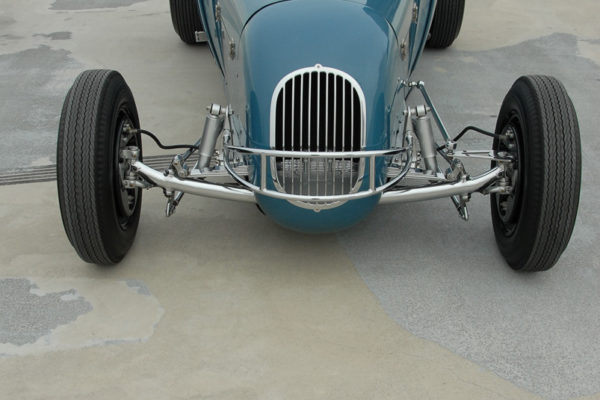
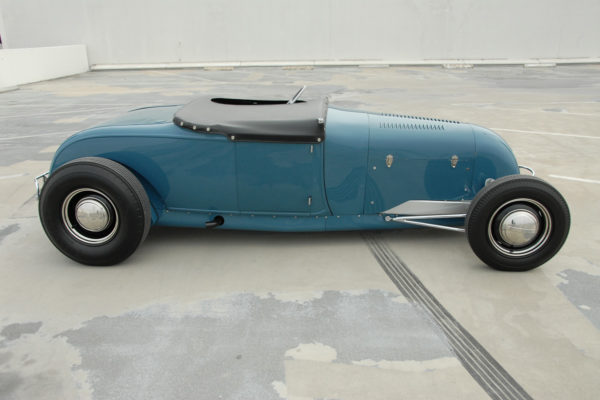
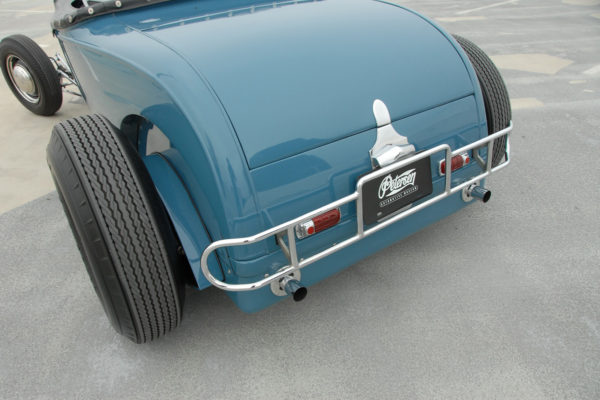
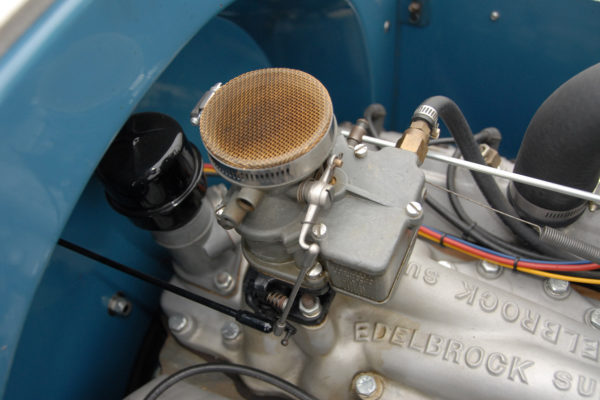
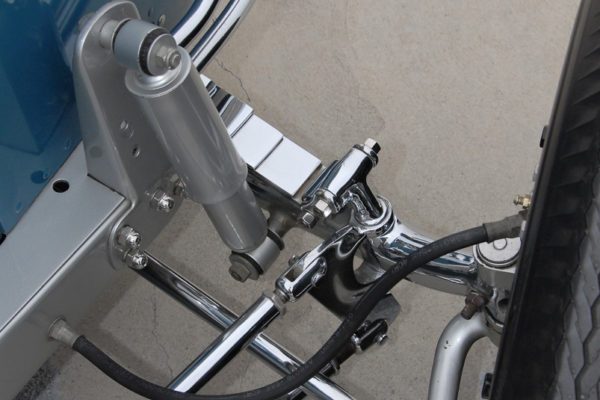
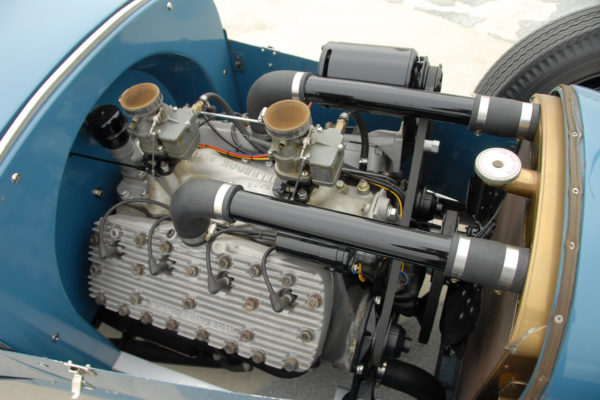
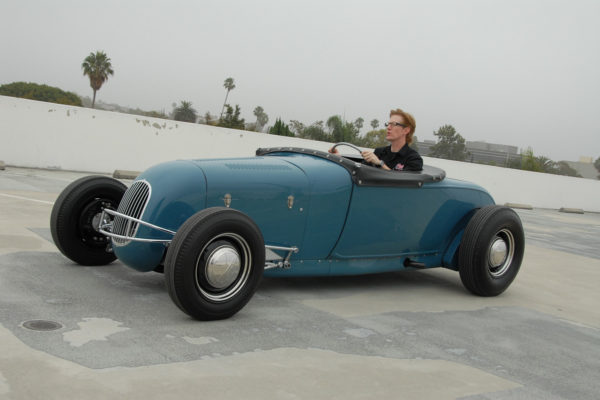
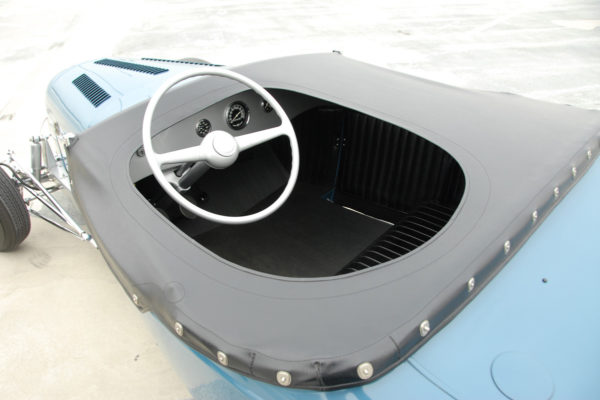
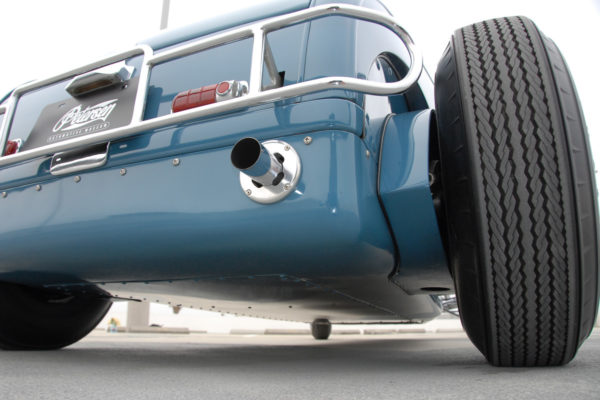
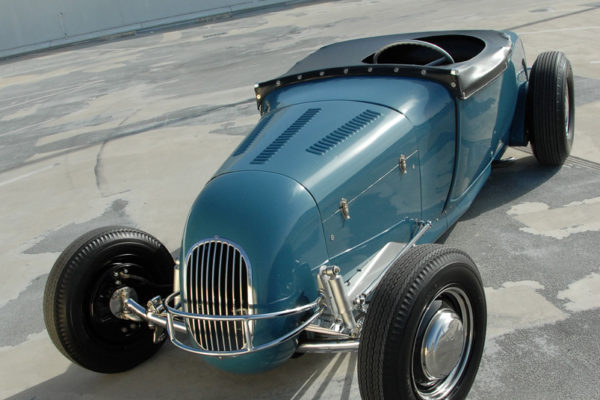
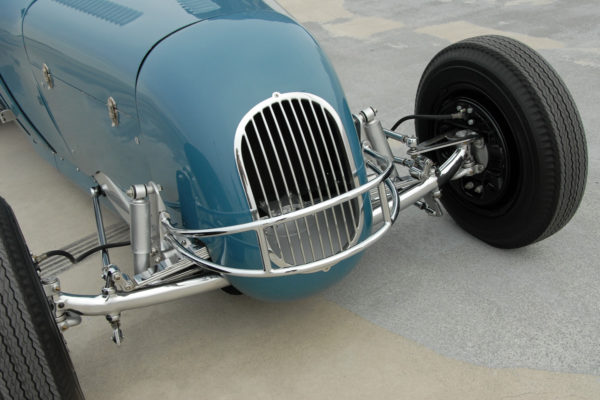
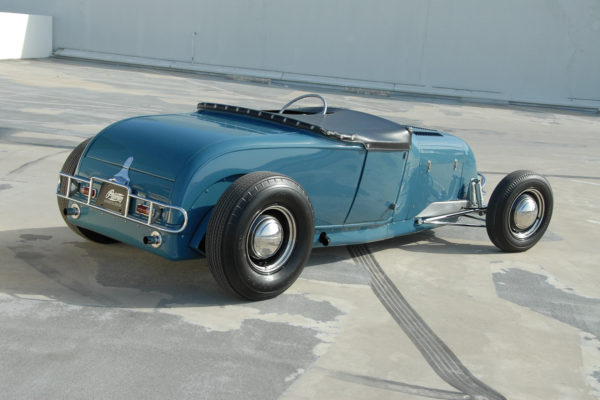
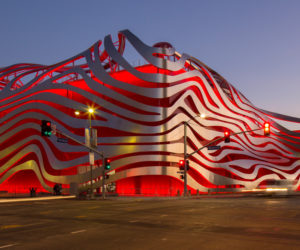
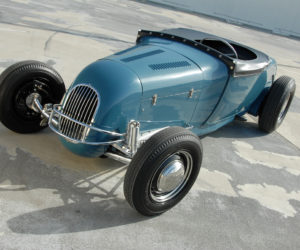
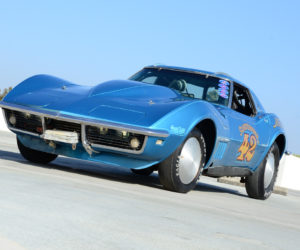




Comments for: THE CORNERSTONE
comments powered by Disqus